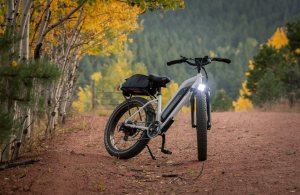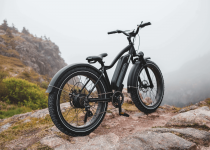E-Bikes Pros And Cons
When considering the purchase of an electric bike, it can be helpful to know the good and the bad. There are many benefits of e-bikes, but they also come with some downsides. This guide will help you decide whether an electric bike is right for you by laying out the pros and cons so you can make an informed decision before purchasing.
Pros:

Cheap Transportation
Electric bikes can provide a cheap and cleaner way to get around, even if you live in a big city. With an electric bike, you don’t need to worry about paying for any sort of special license, registration, or insurance. You also don’t have to pay for parking and charging the e-bike battery at home is much cheaper than paying for a tank of gas.
Improved Health
You might think that an electric bike is only for people who are too lazy to pedal, but the truth of the matter is that it’s a great way to introduce some physical activity into your daily routine. It doesn’t have to be all or nothing. You can still walk or ride a regular bike while using an e-bike on days when you’re feeling tired. By incorporating e-bike use as part of your everyday life, you’ll see benefits like improved health and increased fitness levels.
Cleaner Environment
Electric bikes are much cleaner than other forms of transportation. They don’t require any specialized fuel and they produce zero-emission, which can contribute to a cleaner environment for everyone who uses that mode of travel.
Sweat-free Commutes
Electric bikes can make for very sweat-free commutes. This is especially true if you’re riding on a hot day or uphill, where the electric motor will provide some helpful assistance to cut down on the amount of energy your body has to put into pedaling to get up that hill.
Prolonged Pedal-free Time
One of the best things about electric bikes is that they allow riders more opportunities for extended periods without pedaling at all.
Fun With Friends And Family
Electric bikes are a great way to enjoy biking with friends and family. You can get together for bike rides more often, cycle at your own pace without worrying about hills or headwinds, and you don’t have to worry about running out of breath when cycling uphill. Electric bikes also come in many styles so you can find one that suits your needs. Whether you’re new to cycling or struggle to keep up on traditional bikes, an electric bike may be the key to getting out more often.
Travel Further
E-bike motors assist riders in covering more ground compared to conventional bikes, without as much effort required from cyclists. Riders can go further than they would otherwise be able to go, covering between 20-50 miles before needing a recharge. This distance varies depending on how much pedal assist the rider is providing and what terrain is encountered along the way.
Tackle Obstacle
– Pedaling an electric bike with assisted pedal power makes the bike easier to ride. This makes these bikes especially useful on difficult terrain where hills and headwinds might otherwise slow you down or wear you out.
Cons:
Limited Range
If you intend on using your electric bike to commute long distances every day, this may not be the best option, as many electric bikes have a maximum range of around 30 miles. As you will no doubt need to recharge your battery at some point during your commute this could mean recharging either before or after work each day and not being able to use the motor power in between.
Significant Upfront Investment
Electric bikes are not cheap. They start at around $1,000 and go up from there. While the high initial investment is not something anyone likes to hear, it’s worth noting that electric bikes are much cheaper than their counterparts in other forms of transportation. For instance, a typical car can cost around $20-30k and requires an expensive insurance plan. Electric bikes on the other hand require minimal maintenance. You simply charge your battery, check the tire pressure, and occasionally wash your bike.
Weight
Electric bikes are heavier than conventional bikes. The weight of the bike is a problem because it limits your ability to transport the bike, and it can make riding difficult if you run out of battery power.
Complex parts
For people who don’t know much about e-bikes, a confusing aspect is that they contain a handful of specialized components that are not found on normal bicycles. These can be hard to find or expensive to replace if something goes wrong.
Confusing Legal Status
In the United States, it is legal to use electric bikes with a maximum speed of 20 mph and a motor rated at less than 750 watts anywhere a conventional bike is ridden. In some cases, however, the banning of electric bikes from public places such as on schools or government property has taken place in some states. For this reason, it is important to check for local regulations before using an electric bike in a public place.
E-bikes are a fun way to get around town or hit the trails. As with any technology or product, there are pros and cons. Doing some research before purchasing one will help you decide not only if an e-bike is right for you, but which style suits your needs. Whether you’re new to cycling or struggle to keep up on traditional bikes, an electric bike may be the key to getting out more often.



